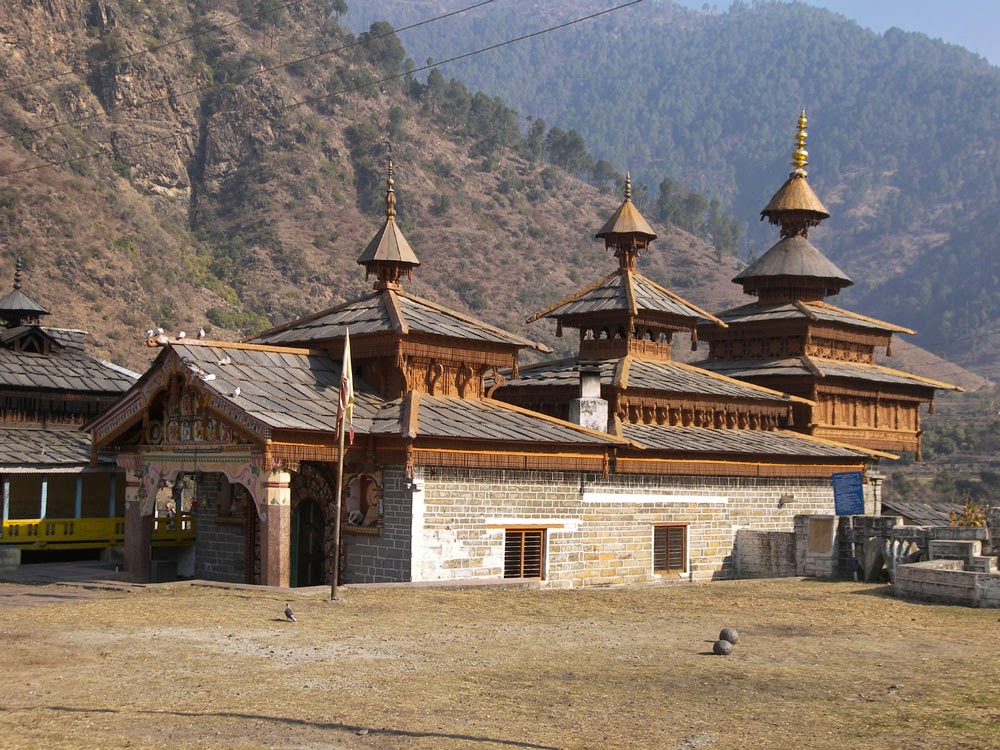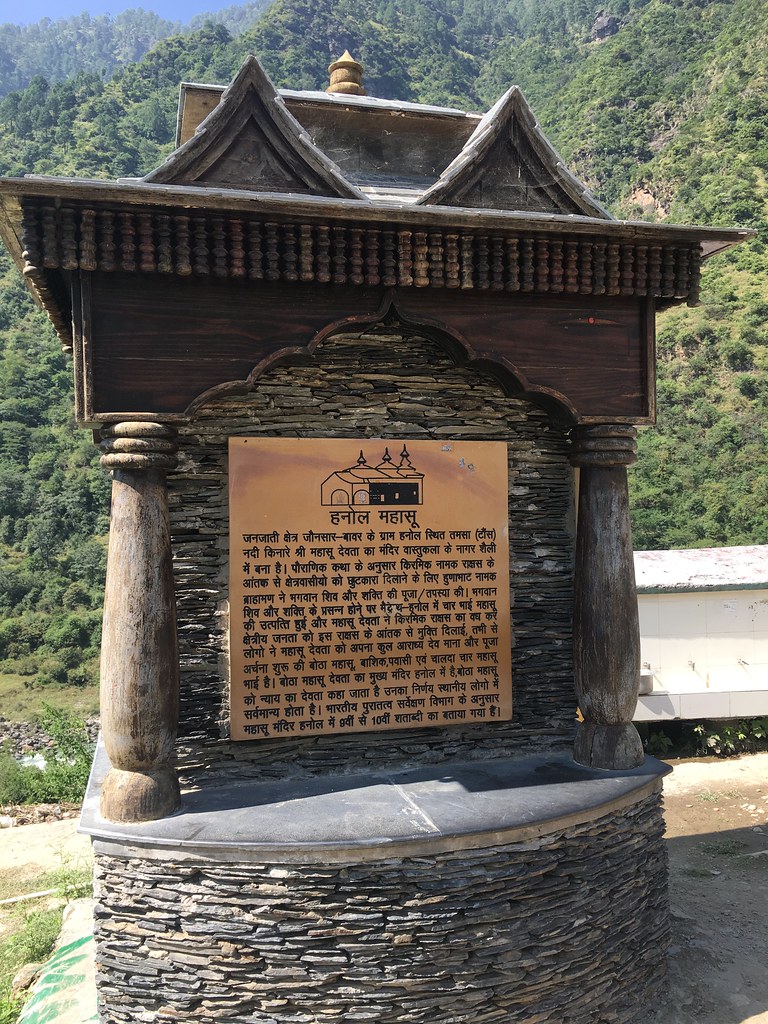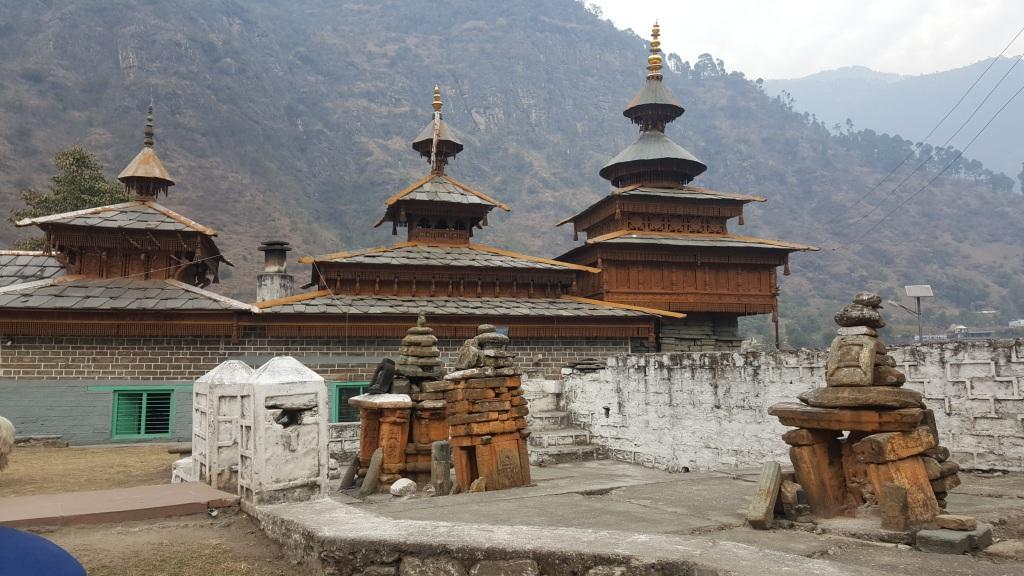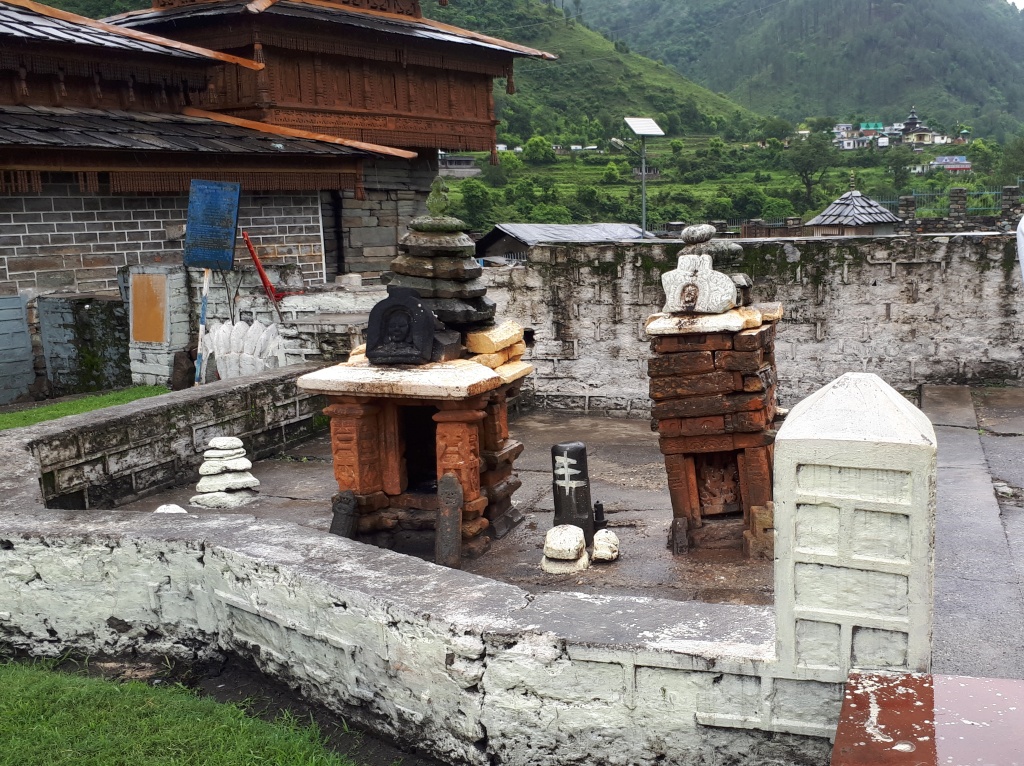
Hanol is a scenic village located in the Jaunsar-Bawar region of Uttarakhand, India. It is famous for the ancient Mahasu Devta Temple, a place of deep spiritual and cultural significance. Nestled along the banks of the Tons River, and surrounded by lush forests and hills, Hanol offers a peaceful and divine atmosphere. The village is situated at an altitude of about 1,250 meters above sea level and is nearly 180 km from Dehradun. Hanol gets its name from a Brahmin named Huna Bhatt, who played a major role in the legend behind the temple. In ancient times, the village was known as Chakrapur.
Who is Mahasu Devta?
Mahasu Devta is not just one deity but a collective of four divine brothers, believed to be powerful forms of Lord Shiva. The word “Mahasu” likely comes from “Mahashiv,” meaning “Great Shiva”. The four brothers are: Basik Mahasu, Bautha Mahasu, Pabasi Mahasu and Chalda Mahasu. People worship all four with great devotion. These deities are not only symbols of divine power but also regarded as the guardians of justice. Locals and pilgrims alike visit Hanol to seek blessings and justice for personal and social matters.
Read More: Lakhamandal – A Spiritual and Historical Place
History Behind the Temple

There is a legendary story linked to the establishment of the temple. Long ago, a cruel demon named Kirmir lived near the Tons River and used to attack the villagers. To avoid chaos, the villagers made a heartbreaking deal, they would send one person each month to be sacrificed. A Brahmin named Huna Bhatt had already lost six of his seven sons to this demon. When his wife went to fetch water from the pond, Kirmir appeared again. She fled, leaving her pot behind.
Later, when she and her husband returned to collect it, a divine voice emerged from the pot. It instructed them to go to Kudu Kashmir and pray to Mahasu Devta. Huna Bhatt followed the instructions and prayed with full faith. The deity blessed him with sacred rice and flowers, and told him to start ploughing a field at a specific time and location. This was where the divine brothers would appear.
Read More: Tiger Fall: The Untouched Gem of the Mountains
The Divine Appearance of the Mahasu Brothers
After returning to Hanol, Huna Bhatt became too eager. He began ploughing the field at Mendrot Thaan before the appointed time. As a result, when the deities emerged from the ground, they got hurt:
- Basik Mahasu was blinded when the plough hit his eyes.
- Bautha Mahasu injured his leg and couldn’t walk properly.
- Pabasi Mahasu hurt his ear.
- Only Chalda Mahasu came out unharmed.
Due to these events, each deity took on different roles and locations:
- Basik Mahasu resides in Mandrath.
- Bautha Mahasu, considered the king, stays at the main temple in Hanol and does not travel.
- Pabasi Mahasu has a temple in Thadiyar village (Uttarkashi).
- Chalda Mahasu keeps moving between Himachal and Jaunsar-Bawar, spending 12 years in each region.
Despite their different locations, Hanol remains the main seat of all four deities. Pilgrims from different parts of India come here to worship them together.
Special Features and Mysteries of the Temple

The Mahasu Devta Temple is full of fascinating secrets and architectural marvels. It is believed that during their exile, the Pandavas, along with their mother Kunti, visited this region. While they found this small temple, they decided to rebuild it with the help of Vishwakarma (the divine architect) and they used stones from the Shivalik mountains. Interestingly, no cement or modern material was used in construction of the temple. The entire structure is made of cut stones and has 32 corners. Inside the temple courtyard, you’ll find two huge metal balls. One weighs around 100 kg, and the other about 48 kg. According to local belief, Bhim used to play with these like marbles. People also say that these balls are shrinking over time, but mystery no one can explain.
The Inner Sanctum and Its Rituals
One of the most unique features of this temple is its sanctum sanctorum or garbhagriha. No ordinary devotee is allowed inside. Only the chief priest can enter during worship. A holy lamp has been burning here continuously and has never gone out. Additionally, a stream of water flows within the sanctum, but no one knows where it originates or where it ends. This water is offered to devotees as “prasad”. The temple also has four beautifully carved doors, each symbolizing the sun, moon, and nine planets. One of the doors has carvings of various gods and goddesses in a garland style, which adds to its artistic beauty.
The Four Brave Warriors of Mahasu Devta

Each Mahasu Devta has a warrior (veer) who serves and protects him. These warriors are worshipped in their own right and have separate temples across the region.
- Kafla Veer serves Basik Mahasu.
- Kailu Veer is the protector of Bautha Mahasu.
- Gudaru Veer is linked to Pabasi Mahasu.
- Sekudia Veer serves Chalda Mahasu.
These brave warriors form a spiritual army that guards the land and its people from evil forces. Their presence adds another layer of strength to the Mahasu Devta tradition.
Conclusion
The Mahasu Devta Temple in Hanol is more than just a place of worship. It is a living symbol of faith, justice, and divine protection. The story of Huna Bhatt, the divine appearance of the four deities, and the ancient connection with the Pandavas make this site one of the most fascinating spiritual destinations in Uttarakhand. Its unique architecture, hidden mysteries, and ongoing ritual traditions draw not only pilgrims but also history lovers and curious travelers. Visiting this temple is a journey into India’s rich cultural heritage, offering both peace and wonder.
So if you’re planning a trip to the mountains of Uttarakhand, don’t miss the chance to visit Hanol. Experience the power and blessings of Mahasu Devta, and take home memories of a sacred place where faith meets history.